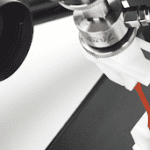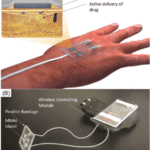Here is another post in the series called Caleb’s Corner, where our company president Caleb Horst pens some original content related to biomaterials based on his insights and experience.
After years of sweat and tears in research, you’ve invented a new technology! Brilliant and congratulations! You know most people have no idea what you’re talking about (including most of your own family), but you believe in the impact this technology will have in your field. Taking your technology to market is a whole new ball game. Since you are considering it, here are a few things to think about.
Market
Your potential customers’ needs are being met by an existing solution, but your technology is going to be an improvement. You need to research the current commercial entities. How big are they (associated employees on LinkedIn)? Are they new or mature (company age, Crunchbase funding history, publication history referencing their products on Google Scholar)? Are they innovating (new products)?
You should also try to estimate your potential revenue stream with some simple calculations. Take the potential number of customers and multiply by the price point of your product. If this number doesn’t get you excited, then that’s a red flag.

Costs
There is a gap between the product you have built for your own use and the product that you will need to take to market. In reality, it is less of a gap and more of a chasm. Whatever your cost/time estimates are, multiply them both by 4. I don’t mean to be negative here, but I have found this to be true and I know many others have as well. Whatever steps you take next, make sure you are prepared for this reality.

Product
Determine the simplest embodiment of your technology that can achieve the intended function. Bells and whistles are for carnivals. There may be some features you put a lot of time into that are not critical. Don’t let your pride get in the way. If they are not critical, put them on the shelf for now.
Make the product easy to use, hard to break, and cheap to operate. Customers may be wary of long learning curves, repair costs, and ongoing expenses.

Presentation
As a technical person, aesthetics of your product may not be top of mind. Think hard about how you can make it look better – even if the potential changes have a neutral or slightly negative impact on the functionality and cost.
Likewise, you may not yet fully appreciate just how critical sales and marketing are to a business. Even if your product is great, customers are not going to beat a path to your front door. Consider hiring someone to help with your graphics and website (upwork.com is a great place to start).
Licensing
Any entrepreneur will tell you that starting a new venture is not for everyone. Licensing can offload much of the business activities and still result in financial benefits. Be sure to work with a partner that understands your technology and is committed to getting it to market.
Time to start selling? In the end, every situation is unique, and the decision is yours. If you can relate to this article and would like to talk further, please let me know. I am always interested in helping others on their journey.
Happy researching!
Caleb Horst
President
CellScale Biomaterials Testing
To read his take on mechanical testing for non-engineers, click here.








